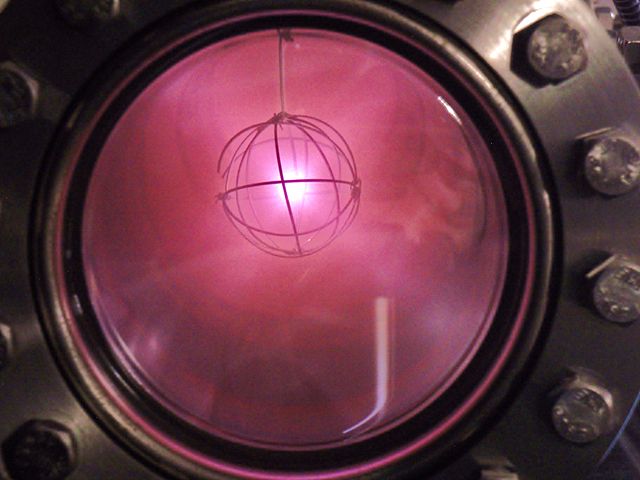The CANDU is a Canadian pressurized heavy-water reactor design used to generate electric power. The acronym refers to its deuterium oxide moderator and its use of uranium fuel. CANDU reactors were first developed in the late 1950s and 1960s by a partnership between Atomic Energy of Canada Limited (AECL), the Hydro-Electric Power Commission of Ontario, Canadian General Electric, and other companies.
Qinshan Phase III units 1 and 2, located in Zhejiang, China.
Bruce Nuclear Generating Station, operating eight CANDU reactors.
Range of possible CANDU fuel cycles: CANDU reactors can accept a variety of fuel types, including the used fuel from light-water reactors.
Pickering Nuclear Generating Station The station consists of six operating and two shut down CANDU reactors housed in domed containment buildings. The cylindrical Vacuum Building is an additional safety system where steam is condensed in the event of a major leak.
Deuterium (hydrogen-2, symbol 2H or D, also known as heavy hydrogen) is one of two stable isotopes of hydrogen (the other is protium, or hydrogen-1). The deuterium nucleus, called a deuteron, contains one proton and one neutron, whereas the far more common protium has no neutrons in the nucleus. Deuterium has a natural abundance in Earth's oceans of about one atom of deuterium among every 6,420 atoms of hydrogen (see heavy water). Thus deuterium accounts for about 0.0156% by number (0.0312% by mass) of all hydrogen in the oceans: 4.85×1013 tonnes of deuterium – mainly in form of HOD (or 1HO2H or 1H2HO) and only rarely in form of D2O (or 2H2O) – in 1.4×1018 tonnes of water. The abundance of deuterium changes slightly from one kind of natural water to another (see Vienna Standard Mean Ocean Water).
Deuterium discharge tube
Ionized deuterium in a fusor reactor giving off its characteristic pinkish-red glow
Harold Urey, deuterium's discoverer
The "Sausage" device casing of the Ivy Mike H bomb, attached to instrumentation and cryogenic equipment. The 20-ft-tall bomb held a cryogenic Dewar flask with room for 160 kg of liquid deuterium.








